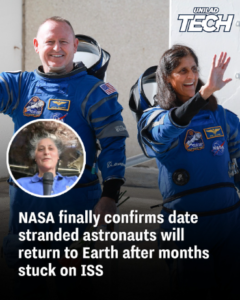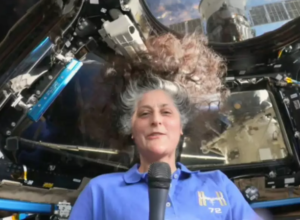 NASA has announced that astronauts Sunita “Suni” Williams and Barry “Butch” Wilmore, who have been aboard the International Space Station (ISS) since June 2024, are scheduled to return to Earth in mid to late March 2025. Their extended mission, originally planned for a shorter duration, was prolonged due to technical challenges with Boeing’s Starliner capsule, which was intended for their return journey.
NASA has announced that astronauts Sunita “Suni” Williams and Barry “Butch” Wilmore, who have been aboard the International Space Station (ISS) since June 2024, are scheduled to return to Earth in mid to late March 2025. Their extended mission, originally planned for a shorter duration, was prolonged due to technical challenges with Boeing’s Starliner capsule, which was intended for their return journey.
Background of the Delay
The primary cause of the delay stems from propulsion issues and propellant leaks identified in the Starliner capsule. These complications necessitated comprehensive analyses and troubleshooting, rendering the spacecraft unfit for the astronauts’ return as initially planned.
Alternative Return Strategy
In response to the Starliner’s setbacks, NASA has coordinated with SpaceX to facilitate the astronauts’ return using a Crew Dragon capsule. The Crew-10 mission, now slated for launch on March 12, 2025, will transport a new crew to the ISS and bring Williams and Wilmore back to Earth. This plan involves utilizing the Crew Dragon capsule “Endurance,” which has a proven track record from previous missions, ensuring a reliable and timely return for the astronauts.
Impact of the Delay
The prolonged mission has extended Williams and Wilmore’s time in space to over nine months, significantly longer than the standard six-month ISS rotation. Despite the extended duration, NASA has confirmed that the astronauts have ample supplies and are in good health. The ISS received a resupply in November, which included provisions for holiday celebrations, contributing to the crew’s well-being during the extended stay.
Public and Political Reactions
The delay has attracted public attention and political commentary. Former President Donald Trump criticized the current administration for the prolonged return timeline and urged SpaceX CEO Elon Musk to expedite the astronauts’ return. While NASA has not directly linked its decision to these remarks, the agency’s collaboration with SpaceX underscores its commitment to the astronauts’ safe and prompt return.
Conclusion
NASA’s proactive measures, in partnership with SpaceX, aim to ensure the safe return of astronauts Williams and Wilmore after an unexpectedly extended mission. The scheduled mid to late March 2025 return will conclude their nine-month tenure aboard the ISS, highlighting the challenges and collaborative efforts inherent in human space exploration.

